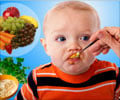BMC Pediatr
Correction to: Adaptive capacity of 2- to 5-month-old infants to the flow, shape, and flexibility of different teats during bottle feeding: a cross-sectional study.
Lagarde MLJ, van Alfen N, de Groot SAF, Geurts ACH, van den Engel-Hoek L
Following the publication of the article [1], the authors noticed that Fig. 3 used is not the updated version. The correct version is shown below. ...
Read More
Source: PubMed
PLoS ONE
Effect of birth weight and nutritional status on transverse maxillary growth: Implications for maternal and infant health.
Garcia Rincon LJ, Alencar GP, Cardoso MA, Narvai PC, Frazão P
We analyzed the association between birthweight, nutritional status and transverse maxillary growth in 7- to 9-year-old schoolchildren. We undertook a ...
Read More
Source: PubMed
J Clin Pediatr Dent
Probable Sleep Bruxism in Children and its Relationship with Harmful Oral Habits, Type of Crossbite and Oral Breathing.
Lamenha Lins RM, Cavalcanti Campêlo MC, Mello Figueiredo L, Vilela Heimer M, Dos Santos-Junior VE
Objective: To establish the prevalence of Probable Sleep Bruxism (PSB) and its association with gender, breast or bottle-feeding, posterior and anteri ...
Read More
Source: PubMed
Child Obes 2020 Jan 14
AFRI_Starting Early Program Impacts on Feeding at Infant 10 Months Age: A Randomized Controlled Trial.
Messito MJ, Katzow MW, Mendelsohn AL, Gross RS
Background: Disparities in obesity-promoting feeding patterns begin in pregnancy and infancy, underscoring the need for early primary prevention in hi ...
Read More
Source: PubMed
J Cancer Surviv 2020 Jan 14
Infant feeding among women with a history of breast cancer.
Azulay Chertok IR, Wolf JH, Beigelman S, Warner E
Health professional organizations recommend exclusive breastfeeding for 6 months, but there are mothers, such as those with a history of breast cancer ...
Read More
Source: PubMed







